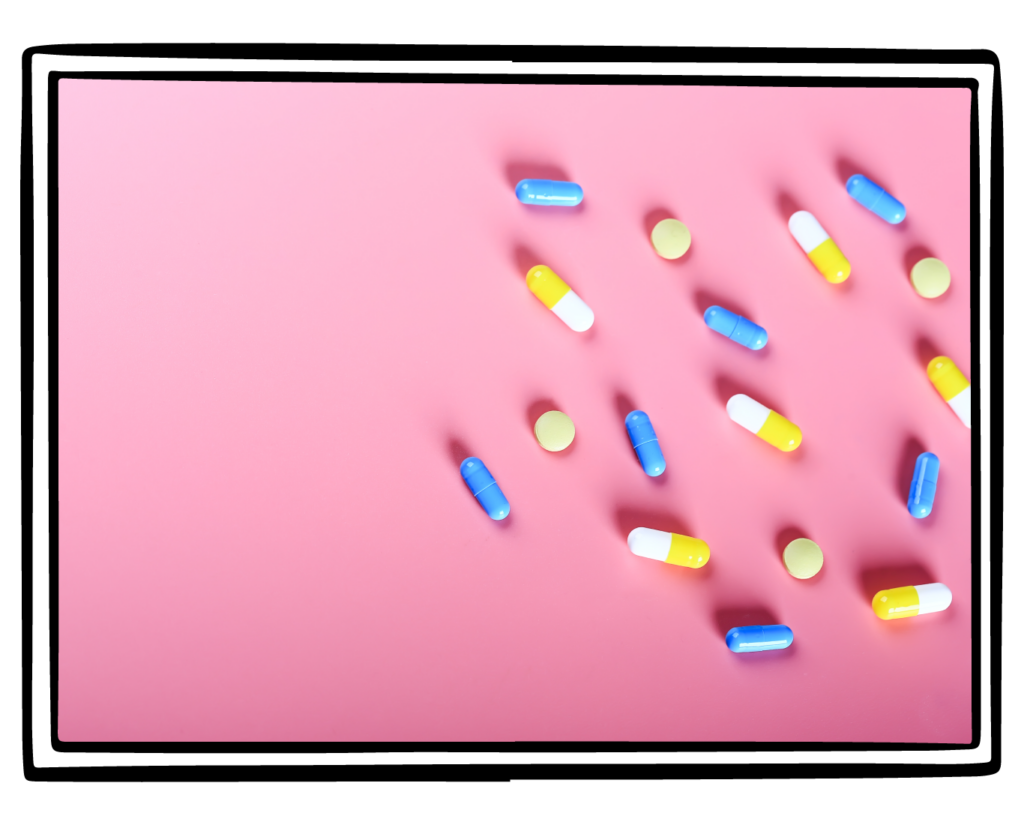Pharmaceuticals being studied for the treatment of low sexual desire & distress (HSDD)
Creating effective treatments for sexual dysfunction in women requires an understanding of how sexual function is regulated in the brain and body. We know that a number of brain areas are involved in pleasure and reward, and in stimulating and inhibiting behaviors. We also know that there are many brain chemicals involved, and that having a balance between the ones that turn us on and the ones that turn us off is important for normal sexual function. (Check out this article to learn more about sex and the brain.)

Drugs for sexual dysfunction in women act in a few different ways. Here are some definitions of the different sexual stages that will help to explain how these drugs work:
sexual cue/signal
an external feature/quality of something that your brain interprets as being related to sex (e.g. erotic visuals, reading about romantic situations)
stimuli
a thing or event that evokes a specific functional reaction
sexual desire
being interested in sex
sexual arousal
the feeling of being turned on sexually, usually accompanied by physical responses (e.g. vaginal lubrication)
sexual function
moving through the stages of desire, arousal, and orgasm, as well as having feelings of satisfaction and pleasure with sexual activity
So what pharmaceutical treatments have been or are currently under investigation for sexual dysfunction in women, and what has been described in the literature so far on their efficacy? Below is a table of the current contenders. As you can see, there is a lot of variation in how these treatments act on the brain and/or body.
Single drug treatments
Action - makes the brain more responsive to sexual signals
Testosterone
- known to play an important role in sexual response
- can be administered in a variety of ways (such as a pill, patch, spray, etc.)
- the data has shown that it can give mixed results on its own, though some studies show increases in sexually satisfying events for participants
Bupropion
- originally developed as an antidepressant
- may improve sexual responsiveness, desire, and sexual function, but not frequency of desire
Action - decreases inhibition in response to sexual signals
Buspirone
- developed to treat anxiety
- one study in individuals with antidepressant-related sexual dysfunction showed improvement in sexual function, however another study showed no change
- more research needed
Action - makes the brain more responsive and decreases inhibition to sexual signals
Flibanserin
- US FDA approved for use in premenopausal women
- shown to increase the number of sexually satisfying events and reduce sex-related distress
- a large study in post-menopausal women showed similar results to those seen in premenopausal women
Action - increases sexual arousal and desire
Bremelanotide
- US FDA approved for use in premenopausal women
- early results showed an increase in sexually satisfying events and a decrease in distress
- positive and similar results in both pre- and postmenopausal women
Combination drug treatments
Actions:
    1. increases the brain's response to sexual cues
    2. increases the genitals' response to sexual stimuli
Testosterone + sildenafil
- early trials showed improvement in sexual function, especially in women with low sensitivity to sexual cues
Actions:
    1. increases the brain's response to sexual cues
    2. reduces inhibition to sexual cues
Testosterone + buspirone
- early trials showed improvement in sexual function, especially in women with overactivation of sexual inhibitory mechanisms
Action - increases the brain's response to sexual cues and reduces inhibition to sexual cues
Bupropion + trazodone
- early results showed increased sexual desire and interest, and decreased distress
- small study – more research is needed to test its efficacy
(Editor’s note: this article was published in 2015, so there may be updated information available for some of the treatments reviewed here.)
Reference Article:
Kingsberg SA, Clayton AH, Pfaus JG. (2015) The Female Sexual Response: Current Models, Neurobiological Underpinnings and Agents Currently Approved or Under Investigation for the Treatment of Hypoactive Sexual Desire Disorder. CNS Drugs; 29(11): 915-33.